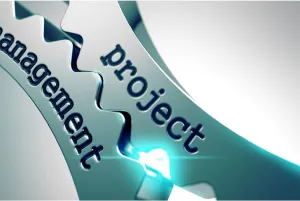Business Concept for Factory Construction
When considering projects such as the construction of a new factory, expansion, or renovation, the initial steps to take are formulating the business concept and conducting a Feasibility Study (FS).
This is the common first step for cases where consideration is necessary due to various factors, such as the development of new products, increasing production capacity, or updating aging facilities.

In this stage, before moving into detailed design, you must first clarify the business concept with reference to similar projects. Additionally, in many cases, it is necessary to compare and examine multiple options, such as:
・Comparison of different candidate sites for construction
・Utilization plans for existing factories
・Utilization plans for a CDMO (Contract Development and Manufacturing Organization)
It is difficult to conduct detailed design studies for these multiple options within a limited timeframe. Therefore, leveraging the expertise of consultants experienced in planning and construction to calculate and compare estimated construction periods and costs is one of the effective methods for formulating a highly feasible plan.
Flow of Business Concept

Organize the Requirements for the Business Concept.
Define requirements for production items, types, and production capacity.
Define business requirements such as location and achievement timing.
Define relevance to the company’s medium- to long-term plans.

Exploring and Organizing Business Concept Proposals
Explore possibilities at a broad level based on basic requirements.
In the case of launching new product production or increasing production capacity:
① Construction of a new factory, ② Renovation/expansion of an existing factory, ③ Production outsourcing to CDMO, etc.
In the case of renovating aging facilities:
① Construction/relocation of a new factory, ② Renovation of an existing factory, etc.
Benefits and Risks
| Benefits | Business Risks | |
|---|---|---|
| ① Construction of a New Factory |
|
|
| ②-1 Major Renovation of Existing Factory |
|
|
| ②-2 Partial Renovation of Existing Factory |
|
|
| Production Outsourcing |
|
|
The next verification step will primarily focus on validating the above benefits and assessing the risks.
It is also necessary at this stage to filter out options with low feasibility.

Verification of Business Concept Proposals
Delve into and verify each business concept proposal
Estimate schedule, cost, floor area, etc., based on the track record of similar cases and past examples
Investigation of the planned construction site
Verification of funding methods
Verification of impacts on existing production lines
Consideration of the size of new construction/renovation (total floor area).
Roughly estimate the required total floor area based on cases similar to the basic requirements.
Consideration of the Schedule
Estimate the period from project start to sales commencement by referring to similar cases:
Basic planning, basic design, inquiries, detailed design, construction, trial operation (IQ/OQ, PQ/PV), stability testing.
Cost Estimation
Estimate the costs related to construction based on the total floor area and schedule.
Verification of the Planned Construction Site
- For new factories, investigate whether there are potential land candidates that can accommodate the anticipated total floor area. Also, estimate the costs involved in land acquisition and development.
- For existing factory renovations, create concrete renovation plans to assess the impact on existing production lines. (e.g., see the figure below)
Verification of Funding Plans
Verify whether the necessary funds for the realization of the business plan can be procured.

Comparison and Narrowing Down of Business Concept Proposals
Compare and narrow down each business plan proposal based on the verified information.
Compare various proposals based on rough estimates of schedule and cost.
Comparison Table
| Conditions | Schedule | Cost | Production Capacity | Remark | Risk | |
|---|---|---|---|---|---|---|
| Plan A |
Newly established・ City A |
Good | Fair | Excellent | consistent with BCP plan | rising land prices and hiring difficulties at the planned construction site |
| Plan B |
Newly established City B |
Good | Fair | Excellent | subsidy available | strict subsidy conditions |
| Plan C |
Plant A Major renovation |
Fair | Good | Good | – | existing production must be halted |
| Plan D |
Plant B Renovate |
Excellent | Excellent | Fair | – | inability to balance with expansion of C product production |
- Excellent:The basic requirements and wants are achievable.
- Good:The basic requirements (Must) are achievable.
- Fair:There are constraints on the basic requirements.

In the business concept stage, we extract and examine all conceivable business concepts based on the basic requirements for factory construction. It is important to set evaluation criteria and verify the extracted business concepts to prevent backtracking in subsequent steps.
Furthermore, the ability to calculate highly accurate estimates and make a judgment on the feasibility of commercialization, even in the initial stage of the project where uncertainty is high, is a key determinant of the project’s success.
At CM Plus…
Basic Requirements Organization

We conduct interviews from a third-party perspective to organize basic requirements. We have a comprehensive list of basic requirements needed during the business planning stage, specifically for production facilities, allowing us to organize these requirements without omission or excess. Using data from numerous similar past projects owned by CM Plus, we can conduct feasibility studies.
Cost and Schedule Estimation

At this stage, since we cannot allocate time and design costs until specific design actions are taken, possessing information on similar projects is crucial. CM Plus has extensive performance data across various fields including pharmaceuticals, medical devices, cosmetics, food, home care products, chemicals, semiconductors, and data centers, enabling us to provide more concrete and reliable cost and schedule estimates.
Regulatory Affairs

Depending on the location, there might be restrictions under the Building Standards Act, and handling certain materials may invoke regulations such as the Fire Service Act, making regulatory compliance costs significant. At CM Plus, we also offer consulting on related laws, allowing for business planning that accounts for regulatory compliance costs.
See other phases
Related Contents
Useful Information
Please also refer to the articles on our information dissemination site, “GMP Platform.” Although the title contains “Pharmaceutical Factory Construction,” the content is applicable to the construction of factories in various industries, not limited to pharmaceutical factories.

“How to Build a Pharmaceutical Plant”
Integrating know-how for the success of pharmaceutical factory construction projects. It explains the entire project planning (i.e., project structuring), basic planning, basic design, and other detailed steps and key points.

“Owner’s Project Management 2nd Revised Edition for Pharmaceutical Facility Construction”
This fourth installment in the series on owner’s construction project management explains what a Feasibility Study (FS) is. It describes the positioning of the FS stage and the project management in each stage (phase).














